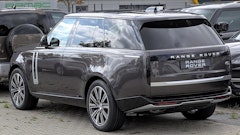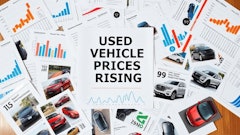
By Jeff Sanford
Toronto, Ontario — March 26, 2017 — There have been a number of interesting developments in the autonomous vehicle (AV) space this past week. Microsoft has announced it’s partnering with Toyota on connected vehicle technology and is actively seeking more OEM partners, a gang of hackers attempted to steal self-driving tech from China’s Baidu, the Toronto Transit Commission says driverless buses are still years away and much, much more!
– A group of 40 “policymakers, researchers and representatives from government, nonprofit organizations and the technology and auto industries” took part in a survey by the Institute of Transportation Studies at the University of California-Davis. According to a report of the survey, “70 percent of participants think fully driverless vehicles will account for more than 20 percent of vehicles sold by 2040 …” As well: 80 percent believe commercially offered shared rides will account for more than 5 percent of all US passenger miles by 2030, and 78 percent think this will rise to more than 20 percent by 2040. When survey participants were asked to specify “which companies are best positioned to capitalize on the revolution in autonomous, shared and electric vehicles,” 67 percent listed Google, 64 percent named Tesla and Uber, and 48 percent chose Lyft and General Motors. Interestingly, the survey also suggests that those taking part believe that, “Without policy actions, 77 percent of respondents say the benefits of shared, automated vehicles will not be evenly distributed across income levels, and 80 percent believe sales of automated vehicles will result in more greenhouse-gas emissions.”
– Although many believe Uber will be part of the coming AV world, many others worry the company may be in a tailspin. Senior executives are abandoning Uber in the wake of a series of lawsuits and negative publicity around the company. It also seems a whole crop of challengers are popping up and challenging the company’s early lead in the market. Libretaxi, according to a report, is described as “an open source project that lets anyone become a rideshare driver in less than a minute. The program has more than 20,000 users worldwide …” Best yet it allows cash be used and is ultra-inexpensive. It was also reported last week that some cities are seeing local alternatives to Uber appearing. According to one report: “Austin is one of a handful of places in the US that have banned both Uber and Lyft from doing business within the city. A disagreement in how both operated led the city to fund its own ride-sharing service, RideAustin … RideAustin is but one of a handful of local ride-sharing apps, but Austinites tell me it’s the most popular. Drivers seem to like it too … The app is essentially a clone of Uber, only without the [values-challenged] business behind it.” Many are now wondering whether Uber can survive.
– Another reason Uber may be in trouble … its AVs don’t seem to work very well. An internal performance report leaked to a news organization finds that the, “… company’s self-driving cars were able to travel an average of 0.67 miles …” on the road they were being tested on before a human had to take back control of the car. A similar report about Waymo’s cars (the Google car) found that vehicles from that company drove 636,000 miles with human drivers forced, “to take control of their self-driving vehicles 124 times. That’s a rate of 0.2 disengagements per thousand miles — or 0.0002 interventions per mile. Uber’s interventions at about 0.67 and 1.3 miles … equate to a per-mile disengagement rate of 1.49.” However, Google’s report, “notes that its figures don’t include all disengagements: ‘As part of testing, our cars switch in and out of autonomous mode many times a day. These disengagements number in the many thousands on an annual basis though the vast majority are considered routine and not related to safety.’”
– The Chinese version of Uber, Baidu Inc., revealed this week that a gang of hackers tried to steal its driverless car technology. A report noted that, “The Beijing-based company’s head of cybersecurity, Ma Jie, said it was unclear who was behind the gang.”
– The world’s most famous investor Warren Buffett talks about AVs and the impact on the auto insurance industry in a video posted to YouTube.com. You can check it out in the player below.
– Microsoft announced this week it is licensing its “connected vehicle patents” to Toyota Motor Corp. The deal is the biggest licensing agreement with a car maker. According to a story in the auto trade press it includes an “operating system, voice recognition, gesture control, artificial intelligence and cybersecurity tools … The agreement is not exclusive, and Microsoft said it is looking to partner with additional automakers.” Erich Andersen, Corporate Vice President of Microsoft’s Intellectual Property Group, was quoted in a press release as saying, “Microsoft doesn’t make cars, we are working closely with today’s car companies to help them meet customer demands.”
– The Toronto Transit Commission (TTC) released a report on AV buses this week, as reported by the Toronto Star. According to the report, “driverless vehicles capable of being used in public transit is still years away, and there’s too little information for the agency to take steps to adopt the technology.” But the report did say that if AV buses become available, “the TTC would be happy to become a leader” in their use (according to a report). TTC CEO Andy Byford was quoted as saying it’s “smart” for the transit commission to take a “wait and see approach … The TTC has in the past had its fingers burnt by getting in at the early edge of technology.” The TTC rolled out hybrid buses in 2008 that proved to be far less reliable than standard buses. “I don’t think Torontonians will thank us if we race into embracing new technology before it’s been proven,” Byford was quoted as saying. The report also said, “… AVs have had difficultly performing in inclement weather, particularly snow, which could ‘significantly limit the viability of AVs in Canadian climates.’” According to the story, the report stated AVs bear “… massive implications for transportation planning” as they could compete with public transit.
– A commentator on popular website reddit.com had an interesting thought in the wake of the rash of car and track-based terrorist attacks of late. In France, Belgium and the UK terrorists have used vehicles to run down innocent victims. The poster asked: When cars are fully self-driving, will terrorists be able to mow down people? Presumably this terror method would be rendered obsolete in an AV world, as cars would be programmed to stay on streets and come to a stop before hitting humans (making attacks with cars impossible).
– German carmaker BMW said this past week it was, “… on track to deliver a self-driving car by 2021.” The comments came form the company’s Senior Vice President for Autonomous Driving, Elmar Frickenstein, who was quoted as saying on Thursday that, “We are on the way to deliver a car in 2021 with level 3, 4 and 5.” A level 5 vehicle is, “capable of navigating roads without any driver input, while a level 3 car still needs a steering wheel and a driver who can take over if the car encounters a problem.” The report also notes that, “In July last year, BMW announced a partnership with Intel and Mobileye to develop self-driving by around 2021.” Last week Intel bought up Mobileye in a multi-billion deal.
http://reut.rs/2nWjRkI
– A new insurance company named Root has, “launched car insurance specifically designed for Tesla vehicle owners that reduces the price of the policy the longer the vehicle runs in autonomous mode,” according to a report by Forbes. The thinking is that autonomous mode is much safer than driving manually.
“Thus, drivers who spend a lot of time on the highway or in conditions where they can activate the autonomous mode will pay less insurance,” according to a report. To sign up for the insurance the driver has to, “download an app that allows the company to access GPS, accelerometers and gyroscopes data on your smartphone, making it possible for the company to evaluate your driving … After about two to three weeks driving with the app, enough for the average driver to forget about the app and go back to his or her typical driving habits, the algorithm has created a user profile that includes how much time the vehicle is in use, frequent destinations, whether drivers change lane excessively, their driving speeds, to what extent they respect traffic rules, or if they use their smartphone while driving, among many other things. After that period, the company claims it stops monitoring. Drivers receive a report on their driving, with some 30 percent of applicants rejected, that allows the insurer to reduce its prices by accepting only drivers they consider to be low risk and thereby increasing the average quality of their customer pool, which in the end means fewer payouts.”
So far Root is only operating in Ohio, where, according to the story, “the likelihood of finding many Tesla owners is probably low. But the idea of a context-based insurance policy that adjusts its price depending on the circumstances or our driving is undoubtedly original, and could be applied to many other situations from an insurance perspective. The company has not yet contacted Tesla, but believes that even without using vehicle data, its machine learning algorithms can deduce at what times the car is driving in Autopilot. Root wants to reach an agreement with Tesla to use data generated by the vehicle itself, which would allow even greater precision.”
– An article in the New York Times this week notes that, “It’s easy to get giddy about self-driving cars. Older people and preteens will become more independent and mobile. The scourge of drunken driving will disappear. People will be able to safely play video games while on the freeway to work.” But the article goes on to suggest that there is one problem autonomous driving is unlikely to solve: the columns of rush-hour gridlock that clog city streets and freeways. Supporters of AVs have claimed that they will dramatically reduce the number of cars on the road as self-driving cars can remain on the road 24-7 shuttling people around. But according to the NY Times article, “If decades of urban planning and economic research are any guide, the solution is unlikely to come from technology but from something similar to Uber’s surge pricing: charging people more to use driverless cars at rush hour … Decades’ worth of studies show that whenever cities add roads, new drivers simply fill them up … With remarkable consistency, the research finds the same thing: Whenever a road is built or an older road is widened, more people decide to drive more. Build more or widen further, and even more people decide to drive. Repeat to infinity.”



















